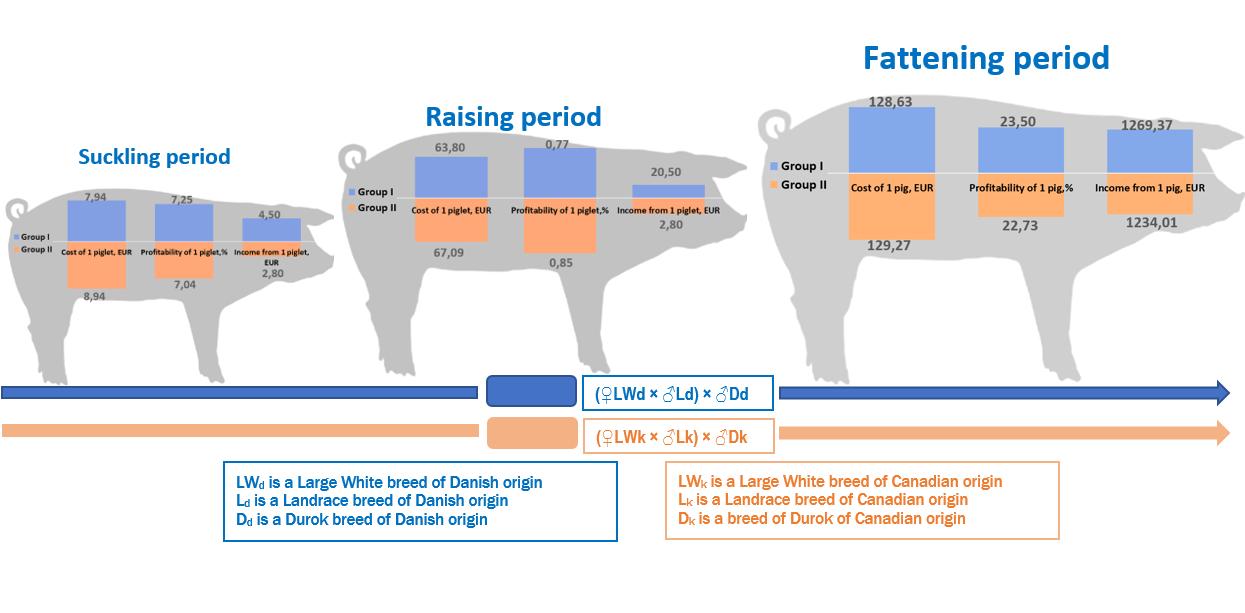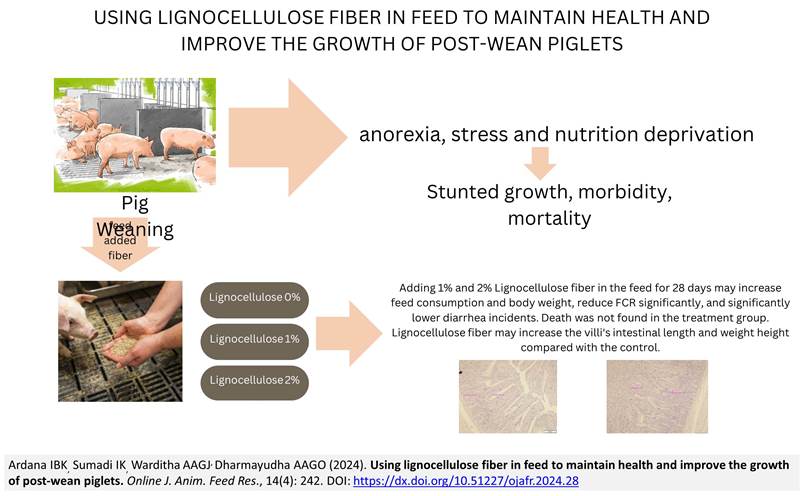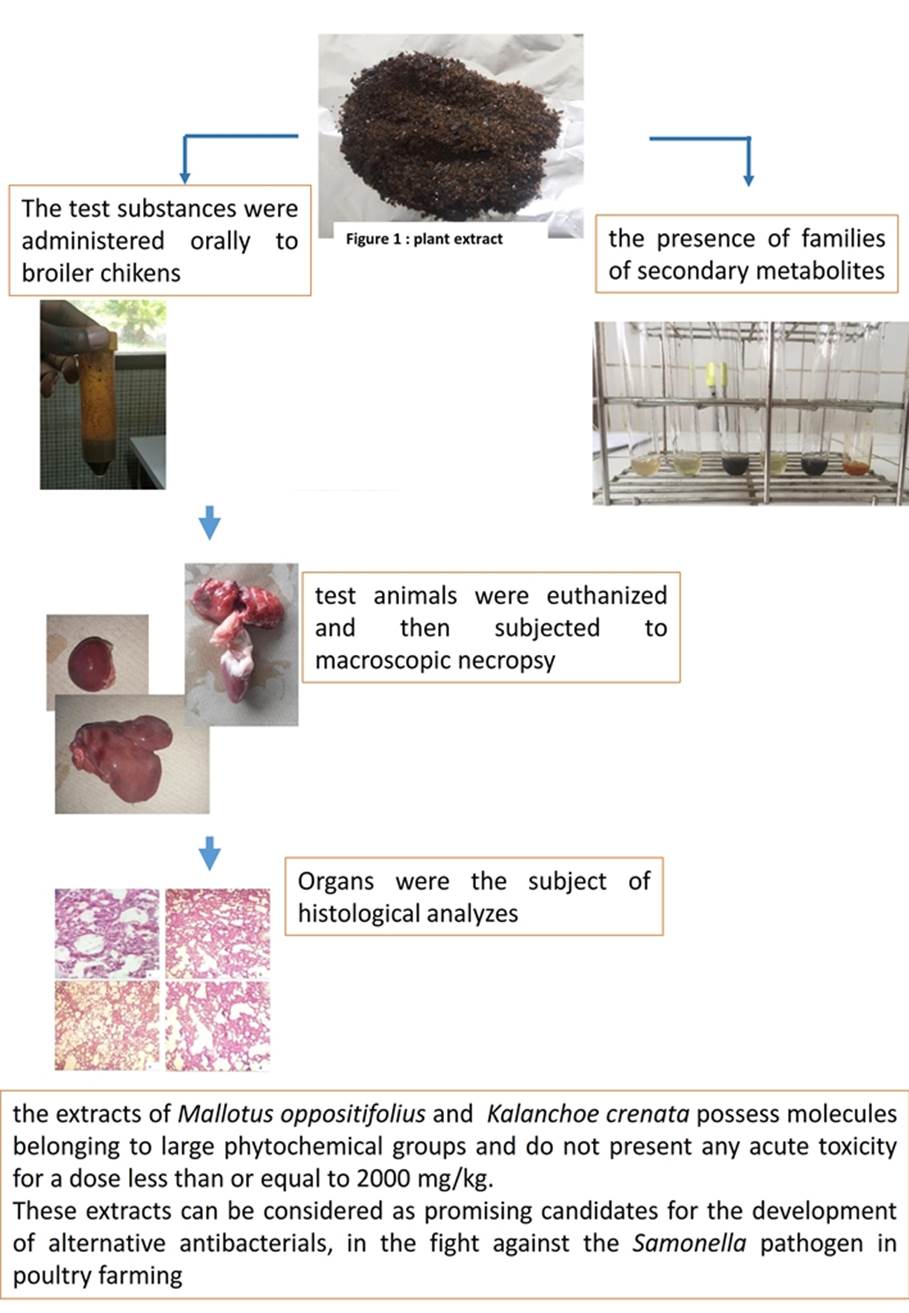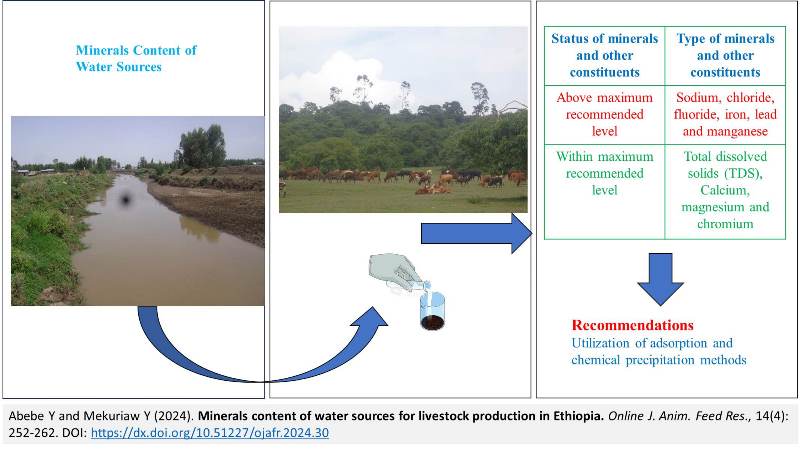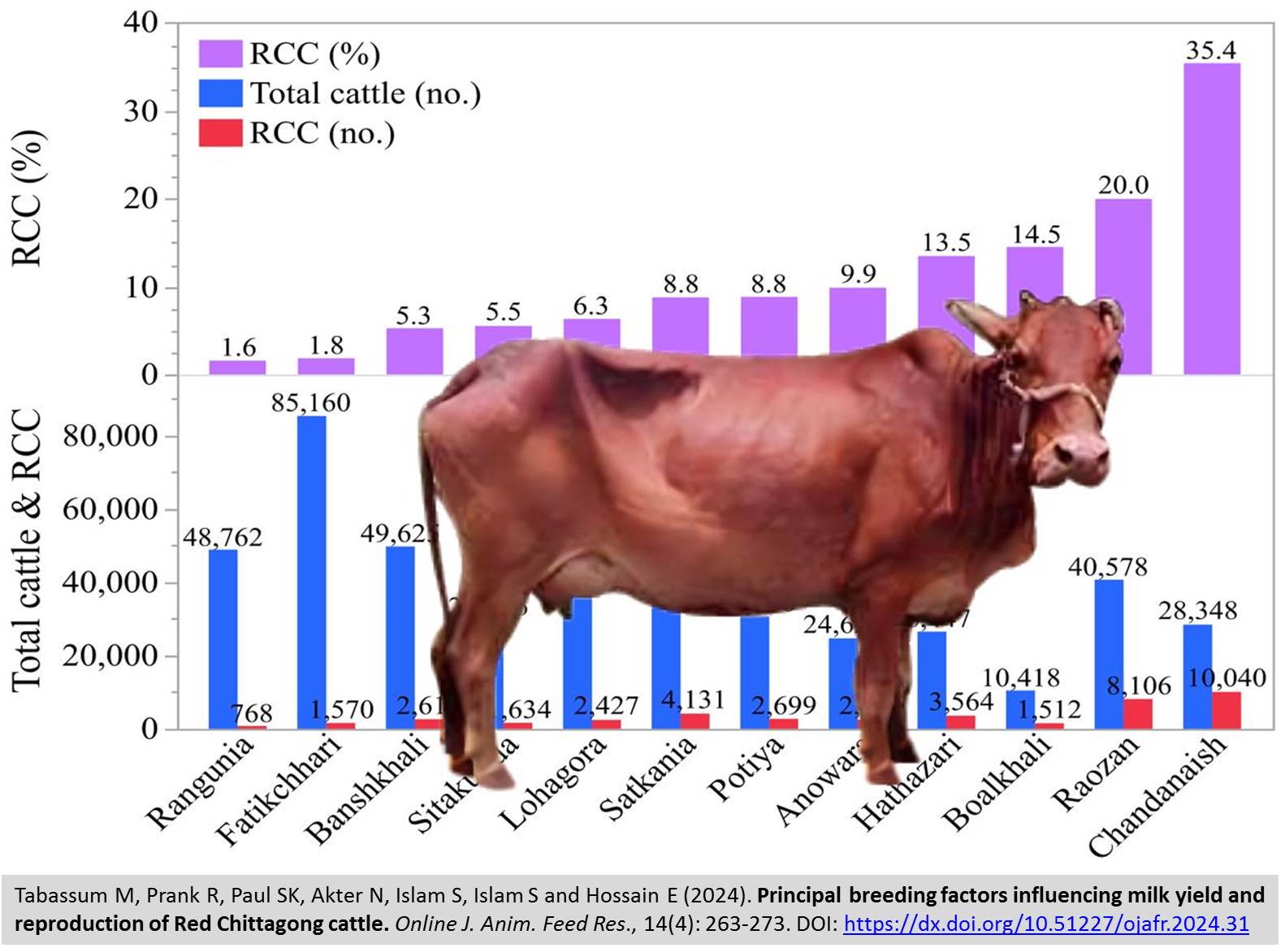Previous issue | Next issue | Archive
![]() Volume 14 (4); July 30, 2024 [Booklet] [EndNote XML for Agris]
Volume 14 (4); July 30, 2024 [Booklet] [EndNote XML for Agris]
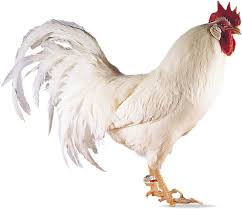
Body length as predictor for improving body weight of White Leghorn chicken breed
Online J. Anim. Feed Res., 14(4): 218-224, 2024; pii: S222877012400026-14
DOI: https://dx.doi.org/10.51227/ojafr.2024.26
Abstract
The association between live body weight and morphometric traits plays a major role in the daily management and improvement of poultry. The objective of the current study was to determine the association between morphometric features and live body weight, as well as to investigate the direct and indirect effects of morphometric traits on White Leghorn laying hens' live body weight. Live body weight (BW) and morphometric traits including shank circumference (SC), body length (BL), wing length (WL), shank length (SL), toe to back length (TBL), beak length (BKL), beak to comb length (BCL), height (CH) and chest girth (CG) were collected from one hundred (n = 100) White Leghorn laying hens aged 40 weeks. The correlation findings showed that BW was positively correlated to SL, WL, SC, BL, and CH (p < 0.05). The Path analysis results reported that BL (0.45) had the highest direct effect on BW while WL (0.14) had the highest indirect effect on BW via BL. Correlation results propose that improvement of BL, SL, SC, CG and CH might increase the BW of White Leghorn hens. Path analysis results on the other hand, imply that BL and SC may be used as selection basis during breeding to improve BW in chickens. This study suggests that BW of White Leghorn is correlated with some morphometric traits that might be used during breeding. The findings also suggest that body length directly influence the live body weight of White Leghorn chicken breed.
Keywords: Correlation matrix, Morphometric traits, Regression, Shank circumference, Wing length.
[Full text-PDF] [Scopus] [Crossref Metadata] [Export from ePrints]
The efficiency of pigs from different genetic origins under industrial conditions in Ukraine
Voloshynov V, Povod M, Mykhalko O, Verbelchuk T, Verbelchuk S, Koberniuk V, Lavryniuk O, and Shcherbatiuk N.
Online J. Anim. Feed Res., 14(4): 225-233, 2024; pii: S222877012400027-14
DOI: https://dx.doi.org/10.51227/ojafr.2024.27
Abstract
The study investigated the dependence of the fattening qualities of pigs and the economic efficiency of their breeding on their genetic origin. Two groups of 28 sows of Danish and Canadian origin inseminated with semen from Durok boars served as research material. A control group consisted of F1 sows of the Landrace and Large White Danish breeds inseminated with semen from Danish Durok boars. The group II, on the other hand, consisted of F1 sows of similar breeds from Canadian selection inseminated with semen from Canadian Durok boars. The studies focused on the efficiency of the sows' reproductive function, the growth intensity of the hybrid piglets and the efficiency and profitability of their rearing and fattening. Methods of analogue pairs and statistical data analysis were used. It was found that piglets of Canadian origin had a 7.5% higher average head weight during the weaning period, which contributed to a 7.5% higher market value and at the same time to a 6.7% higher income from rearing a piglet during this period and to a 3% higher profitability of its rearing compared to analogues of Danish origin. It was shown that animals of Danish origin had a 9.6% higher gross growth of the piglet litter during the fattening period, which gave them a 7.6% higher weight at the end of the fattening period and contributed to a 7% higher cost price for this period, a 7.6% higher market value and a 10.1% higher feedlot income and a 0.77% better feedlot profitability compared to Canadian-bred counterparts. We recommend the use of sows of Danish origin if the farm intends to sell weaned piglets, in the industrial farms. If the farm intends to sell full-grown or (fattened) slaughter pigs, it is advisable to use pigs of Canadian origin.
Keywords: Breeding, Farm costs, Income, Market value, Piglet growth.
[Full text-PDF] [Scopus] [Crossref Metadata] [Export from ePrints]
Using lignocellulose fiber in feed to maintain health and improve the growth of post-wean piglets
Ardana IBK, Sumadi IK, Warditha AAGJ, Dharmayudha AAGO.
Online J. Anim. Feed Res., 14(4): 234-242, 2024; pii: S222877012400028-14
DOI: https://dx.doi.org/10.51227/ojafr.2024.28
Abstract
This study aims to determine how adding fiber lignocellulose in feed affects performance, intestinal health, morbidity, and mortality in post-wean piglets. The animal model used was 54 piglets divided into three groups of treatments: the control group was given starter commercial feed, group T1 was given starter pig feed with added 1% lignocellulose fiber, and the T2 group was assigned starter feed with the additional 2% lignocellulose fiber. Treatment is given for 4 weeks starting at 41-68 days old. Health observations were also carried out during the research. Piglet performance is determined based on feed intake, body weight and feed conversion ratio (FCR). Examination of the health of the gastrointestinal tract by measuring the length and weight of the intestine, microscopic length of the villi and depth of the crypts, as well as the number of Escherichia coli in the piglet's small intestine. The research showed that adding 1% and 2% lignocellulose fiber in the feed for 28 days may increase feed intake and body weight and reduce FCR significantly. Adding lignocellulose fiber may significantly lower diarrhea incidents, and death was not found in the treatment group. Lignocellulose fiber may increase villi's intestinal length and weight height compared with control. It can be concluded that supplementing lignocellulose fiber through feed may increase the piglet's health growth and efficiency.
Keywords: Body weight, Gut health, Lignocellulose fiber, Performance, Post-wean piglet.
[Full text-PDF] [Scopus] [Crossref Metadata] [Export from ePrints]
Prospects for the use of medicinal plants extracts (Mallotus oppositifolius and Kalanchoe crenata) as antimicrobials against salmonellosis in poultry
Rivière AK, Alassane T, Carole BA, and Germain KT.
Online J. Anim. Feed Res., 14(4): 243-251, 2024; pii: S222877012400029-14
DOI: https://dx.doi.org/10.51227/ojafr.2024.29
Abstract
This study is a contribution to the search for alternatives to combat antibiotic resistance in Salmonella strains in poultry farming. The objective of this work is to highlight the main phytochemical compounds of 2 Ivorian medicinal plants (Mallotus oppositifolius and Kalanchoe crenata) and to evaluate their acute oral toxicity with a view to their use in the poultry sector, to fight against certain avian pathologies, including Salmonellosis. The phytochemical compounds of the different extracts of the plants used in this study were highlighted by colouring and precipitation methods. Acute oral toxicity was adapted to broilers according to the guideline OECD 425, 2008. This experimental study, which is the very first adapted to broiler chickens, was carried out with the agreement of the National Ethics Committee for Life and Health Sciences. The phytochemical screening carried out showed that each of these three antibacterial extracts possesses at least the major phytochemical groups sought. At the end of the acute oral toxicity study, no mortality was observed and the biochemical analysis of the subjects' blood showed creatinine values ≤ 10 mg/L.; aspartate aminotransferase (ASAT) ≤ 275 IU/L; alanine aminotransferase (ALT) ≤ 50 IU/L, urea=0.01g/L, CRP≤6 mg/L; and blood sugar was between 2 and 5 g/L in subjects from different batches. Ultimately, the aqueous and ethanolic extracts of Mallotus oppositifolius and the ethanolic extract of Kalanchoe crenata can be used as an antibacterial in broiler farming.
Keywords: Antimicrobial supplements, Medicinal plants, Phytochemicals, Poultry, Salmonella.
[Full text-PDF] [Scopus] [Crossref Metadata] [Export from ePrints]
Minerals content of water sources for livestock production in Ethiopia
Abebe Y and Mekuriaw Y.
Online J. Anim. Feed Res., 14(4): 252-262, 2024; pii: S222877012400030-14
DOI: https://dx.doi.org/10.51227/ojafr.2024.30
Abstract
Minerals are essential nutrients for sustainable livestock production and productivity. Water is a source of minerals to livestock production beside of feed minerals. Presence of some minerals in water at higher levels will be toxic to animals and will affect animal health and productivity. So, it is essential to know the mineral content of water sources for livestock consumption in the country. This paper is based on a review of literature that were conducted on the mineral content and quality of water sources mainly for human consumption and other purposes in Ethiopia. Based on the literature values of the mineral content of the water sources and recommended values of minerals in livestock drinking water, the water sources were assessed for their suitability for livestock production. The review showed that the presence of variation in the mineral content of the water sources in Ethiopia. In addition, there is variation in the mineral content of the water sources between the dry and the wet season. The total dissolved solids (TDS), Calcium, magnesium, chromium and zinc content of the water sources in Ethiopia is within acceptable levels for livestock consumption. But the sodium, chloride, copper, fluoride, iron, lead and manganese content of some of the water sources (river, well and lake) in the country is beyond the maximum recommended level. This demands implementation of mitigation mechanisms to reduce the mineral contents of water sources; otherwise, it will result in deleterious effects on the health and productivity of animals. Generally, there is lack of adequate research on the mineral content of water sources for livestock production in the country. So, there is a need to conduct more research on the water sources being consumed by livestock in the country in the future.
Keywords: Ethiopia, Livestock production, Minerals, Season, Toxic elements, Water sources.
[Full text-PDF] [Scopus] [Crossref Metadata] [Export from ePrints]
Principal breeding factors influencing milk yield and reproduction of Red Chittagong cattle
Tabassum M, Prank R, Paul SK, Akter N, Islam S, Islam S and Hossain E.
Online J. Anim. Feed Res., 14(4): 263-273, 2024; pii: S222877012400031-14
DOI: https://dx.doi.org/10.51227/ojafr.2024.31
Abstract
The study aimed to investigate the principal breeding factors influencing milk yield and reproduction in the Red Chittagong cattle (RCC). Retrospective records of a total of 20 dairy cows from the 1st to the 2nd parities were collected from the record sheet from January 2020 to June 2022. Results indicated that birth weight of the RCC was 7.5% higher (P=0.023) in parity 2 when compared with parity 1. Accordingly, total milk yield per lactation was 10.2% higher (P=0.004) in parity 2 in comparison with parity 1. Age at first service was 34.7% higher (P=0.001) in parity 2 compared with parity 1. Accordingly, age at first conception was 38.3% higher (P=0.001) in parity 2 compared with parity 1. The dry period was 22.8% higher (P=0.001) in parity 1 compared with parity 2. Age at first service was 18.3% higher (P=0.014) in natural service (NS) compared with artificial insemination (AI). Age at first conception was 16.5% higher (P=0.023) in NS compared with AI. Post-partum period was 11.9% higher (P=0.008) in AI compared with NS. Days open was 8.9% higher (P=0.018) in AI compared with NS. Calving interval was 2.9% higher (P=0.006) in AI compared with NS. An increased probability of infertility was associated with NS compared with AI. Birth weight of the calf and dry period of the dam were negatively correlated while live weight and post-partum period of the dam were positively correlated milk yield at the expense of reproductive health. A decreased probability of milk fever, mastitis, metritis and infertility was associated with increased milk yield. Principal component analysis revealed that days open, calving interval and service per conception were the principal eigenvectors determining performance of RCC. Overall, RCC performed better in the 2nd parity compared with the 1st parity.
Keywords: Birth weight, Lactation, Milk yield, Parity, Red Chittagong cattle.
[Full text-PDF] [Scopus] [Crossref Metadata] [Export from ePrints]
Previous issue | Next issue | Archive
This work is licensed under a Creative Commons Attribution 4.0 International License (CC BY 4.0).![]()
| < Prev | Next > |
|---|

